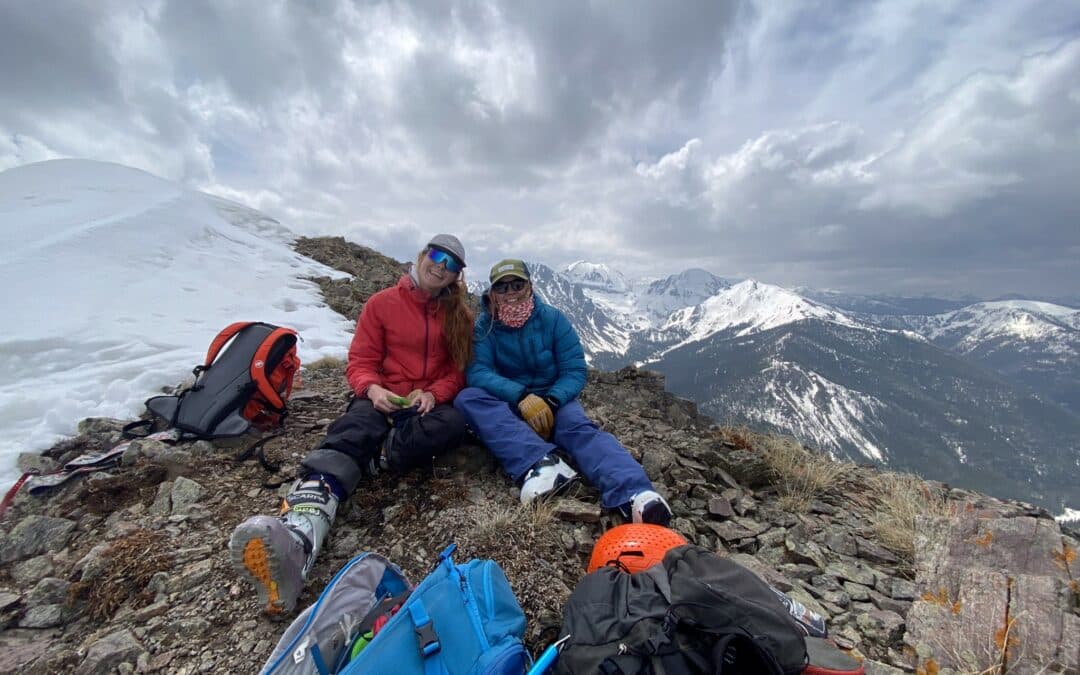When I was a little girl skiing with my mom, I’d inevitably cross the tips of my skis strapped to my little, uncoordinated legs and fall to the snow. “Ope, a Snow Snake got ya!”, my mom would call out as her loving reminder to brush off my tumble, straighten my skis out, and get myself back on my feet. The mystical Snow Snakes were the bane of my existence in those early days on the snow. Slowly they became our inside joke and I learned to laugh at the Snow Snakes and laugh at myself. It was how my mom taught me that falling was a part of skiing.
Last spring, I took a tumble skiing in the backcountry, and as I felt the sudden grab in my turn, hit the snow, and was sliding down the slope head-first on my back, pin bindings not releasing, I pleaded with all my heart that this was one of those silly Snow Snakes I could shake off. But in my gut I knew. This one was different and the snake had sunk its teeth into me. My knee was no more, and there was no skiing back out to the car.
In that harrowing moment, the day instantly turned from glorious bluebird corn runs on Cameron Pass, to a rapid mental calculation of where we stood, what we had, and sometimes more important, what we didn’t have. My friends and I were wise enough, a few hours earlier, to communicate what was in our packs and what we left behind.
My backcountry crew had at least six hours of daylight on a warm day in May. We had my friend, Anna’s, extensive ski patrol knowledge, first aid kit, and SAM split. We had food and water and extra warm layers. We were also looking at around ¼ of a mile straight downhill through the trees to the car.
What we didn’t have was cell service for miles and miles. We also didn’t have an InReach (Emergency GPS locator) or a rescue sled to carry me out.
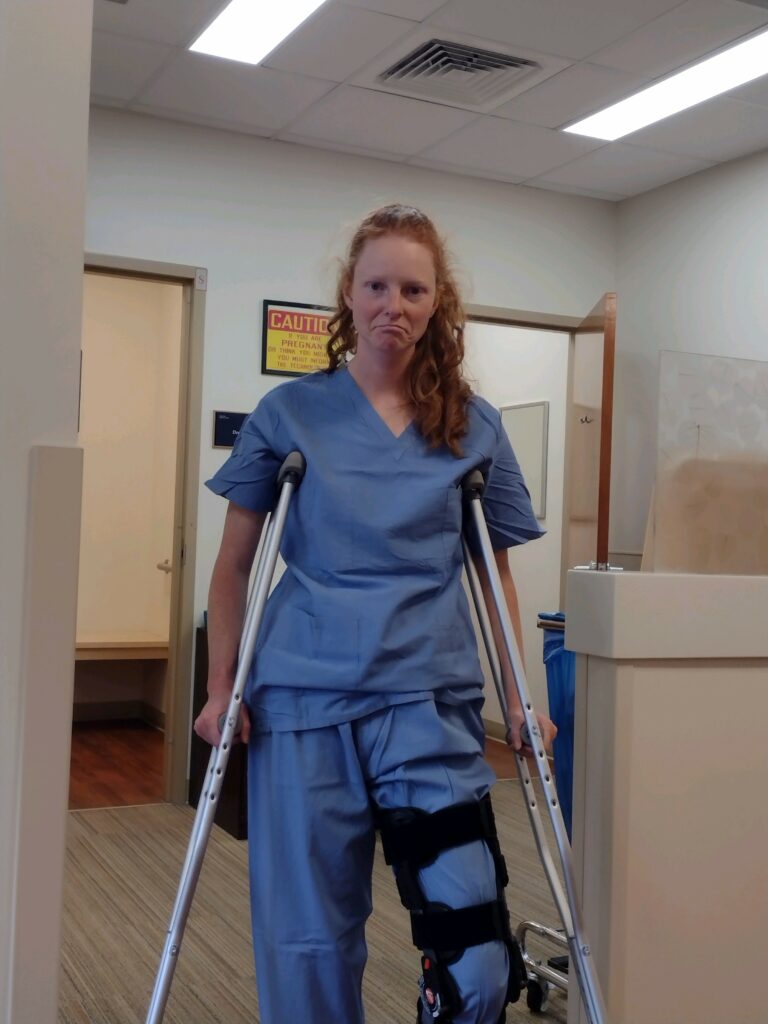
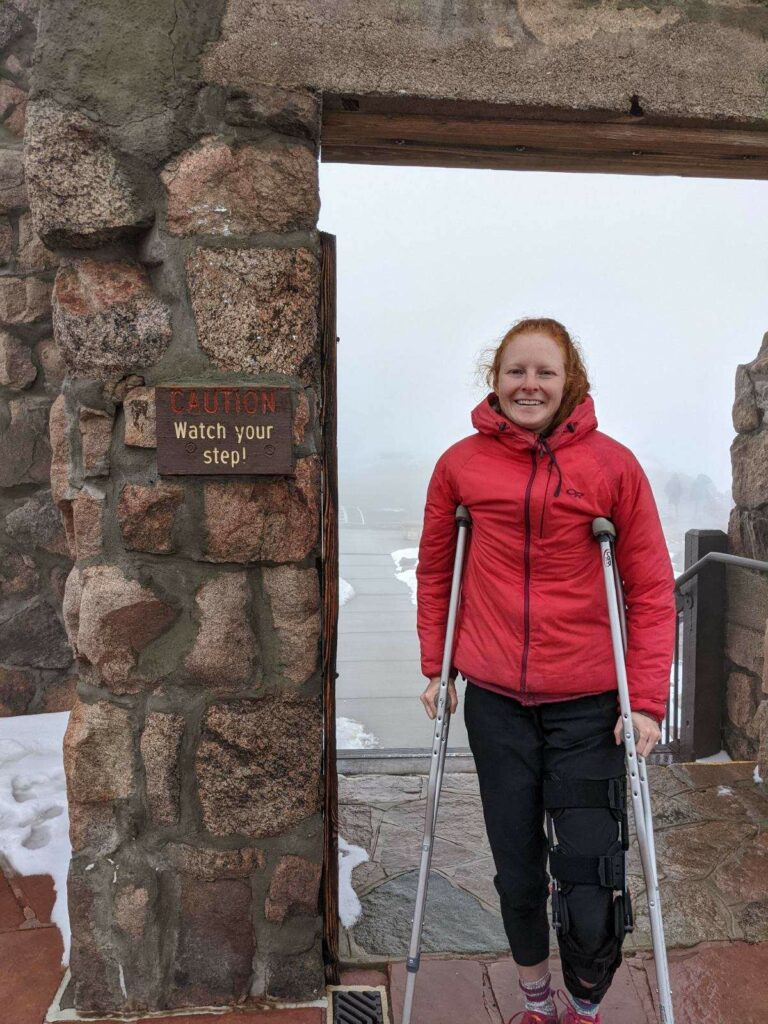
With ibuprofen, a SAM splinted leg, and sheer adrenaline, I braced myself with my ski poles and hobbled the whole way down to the car. It was the longest ¼ mile of my entire life. I don’t know how long it took, but it had to be hours. All I knew was to use my adrenaline to get out, now! Once I crawled into the back seat of the car, I crashed, utterly drained.
Two weeks later, I was in surgery. I tore what they call The Triple Crown, my ACL, MCL, and meniscus. After surgery, I was non-weight bearing and on crutches for six weeks. This left me with myself, for endless hours in my head.
Hindsight 20/20 was vicious as I ran through what I could have done differently that day a million times over. I beat myself up for not meeting my physical therapy goals perfectly, on the dot. I had my high expectations of recovery shattered. I cried, I screamed, I said terrible things to myself. I thought I would just remember how to walk again, and I found out I’d have to re-learn how to move my body. My go-to previous stress relief tactics were no longer accessible to me: no running, biking, hiking, or walking my dog. I was stuck, with myself, inside.
My past relationship with these Snow Snakes was simple. Get my skis to the downhill side and push myself up. This time, I was faced with a brand new challenge. I’m in physical therapy and the gym, a lot. I’m thinking hard about how I eat to help my body heal and rebuild muscle. I have a list of mantras that I’ve collected to say to myself instead of the dark voice that held me in my worst moments. The biggest lesson learned was to not compare myself to other people’s knee recoveries. Instead, I found the simple joys I still had in life. I was going on picnics and drinking coffee in the sun on my deck. I’ve transitioned from crying sad, gutted, angry tears to happy, celebratory tears.
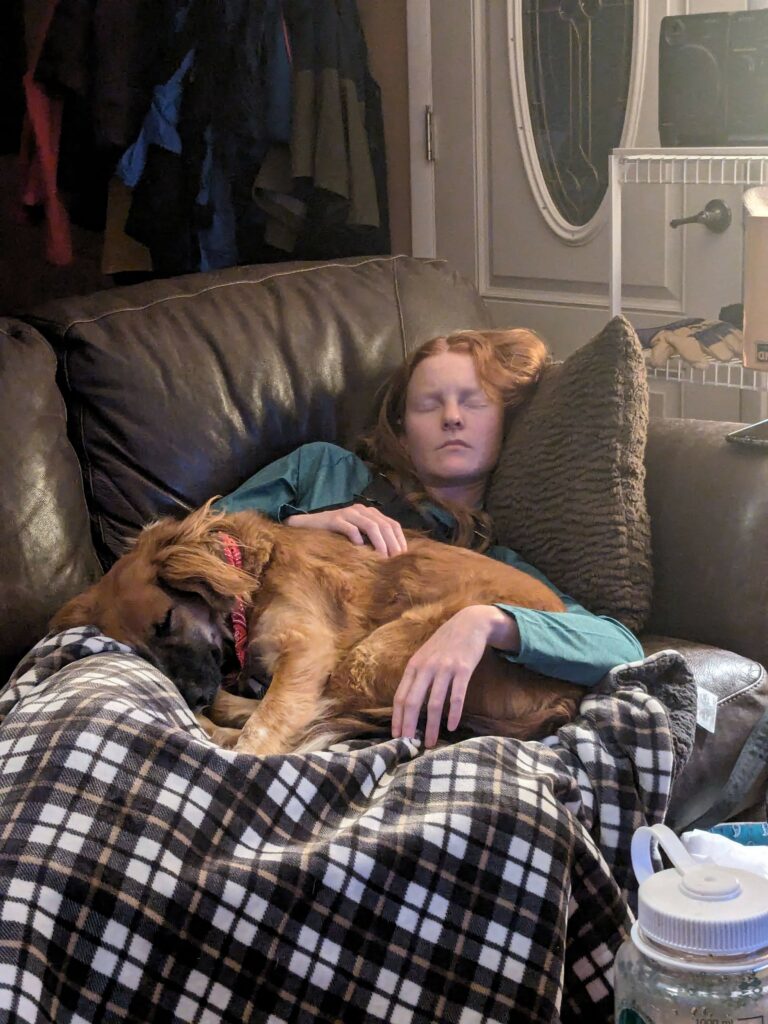
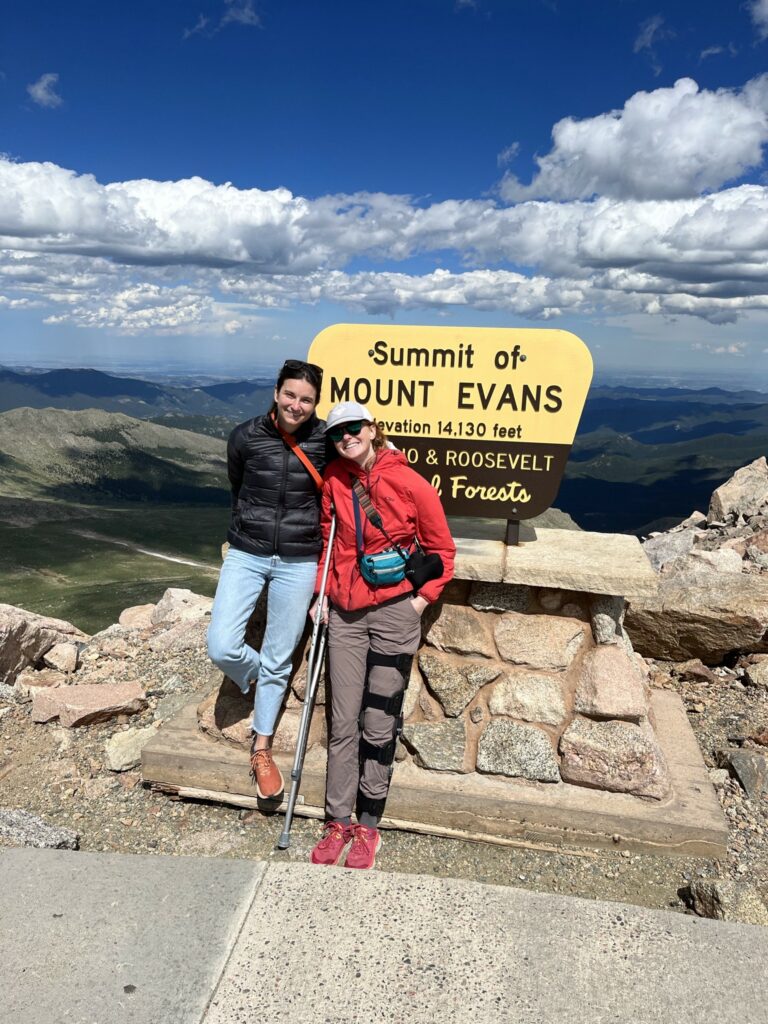
Here’s the thing about injuries and defining moments; they cut you open and force you to heal and grow mentally and physically. You feel every bump in the road, every growing pain, every little setback without distraction. But then, you’re in this place to feel every new first. How precious the sun on your face and wind in your hair are. How incredible riding your bike down the street is. You feel how much you are leaning on your friends and family, but then how much they love you as they continue to show up and root for you even when you couldn’t root for yourself.
My point is, if you’re still reading this and have experienced or currently experiencing an injury, just know that I see you and hear you. Your tears, happy and sad, anger and frustration are 100% warranted. It sucks and you might not be the best version of yourself at this moment, but keep sucking at the marrow of life whatever that looks like for you; eating tasty food, calling an old friend, soaking up the sun! As painful as it is, with time you will heal.
If you’re wondering what the heck am I supposed to get from all of this?, here are my nuggets. Some of this advice might not be new, but they are still great to consider or review before you have an incident.
- Consider your backcountry group (seriously):
- How do you relate to them?
- How do you communicate with each other?
- Do they have avalanche education training?
- How do you work together?
It takes more than just being good friends to be great backcountry partners.
- Inspect your gear:
- Did you have a bit of an ego when those DINs were set?
- Is your body or your bindings going to give when it comes down to it?
- What rescue, first aid, and communication gear have you invested in?
- Do you carry it?
- Do you know and practice how to use it?
- What about your backcountry partners?
- Headspace before you venture:
- When you’re getting ready to leave the trailhead, take a second and think about what mindset or headspace are you in?
- Does it serve you?
We never outgrow the Snow Snakes, they are always out there, waiting under the snow. We don’t know when they’ll grab us. All we can do is prepare to get up. Practice, the right gear, and the right people in your corner for when you do fall is all you can hope for.
Words + Photos provided by Erin Hennessey (she/her)
Erin was the VNTRbirds 2023 Mentorship Scholarship recipient. She lives in Pueblo, CO and an avid backcountry skier, and aspiring AIARE instructor. Erin has spent the last few years in the Pacific Northwest skiing volcanoes, but she’s excited to be back in Colorado skiing champagne powder. Her day-job is as a Hydrologist for the US Geological Survey, where she works on a variety of water-related studies. She also loves fixing things, reading books, and riding bikes!

